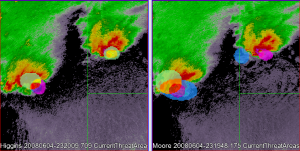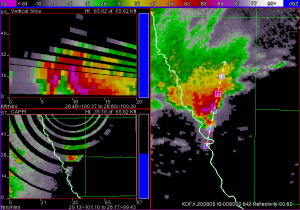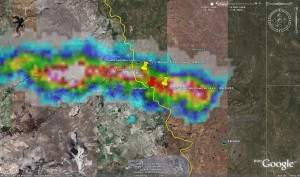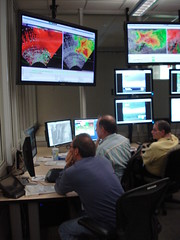The IOP today lasted from 5:15 pm to 7:30 pm, and we shut down early to save our energy for Thursday’s potentially significant event. For the first time, we concentrated on all 3 threats (severe hail, severe wind, and tornado) for multiple storms near the Northeast Colorado/Southwest Nebraska border region. We had two teams, Chris/Milovan and George/Jon. One team member monitored the near-storm environment and interrogated the base radar data using AWIPS, while the other team member created the probabilistic hazard forecast grids. The team members switched roles around 6:20 pm.
Chris reported it was hard to “ramp up” from a cold start. He added it would be hard to predict how the work load might be distributed around the WFO in a warning event if probabilistic grids were the primary product. George assumed the software would be easier to use and more stable in an operational environment, and he thought there would still be the same difficulties anticipating short-term changes in storm motion and intensity. In terms of workspace management (desktop real estate), Jon said it was a good idea to keep the product generation screen separate from the data interrogation screen. Everyone reported it was not easy to keep the creation polygons visually separate when working all 3 hazards at once on the same storm, and therefore hard to work with them.
Kevin Scharfenberg (EWP Backup Weekly Coordinator, 2-6 June)








